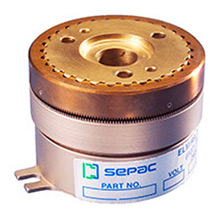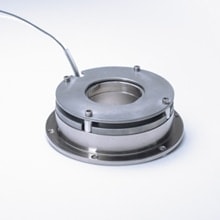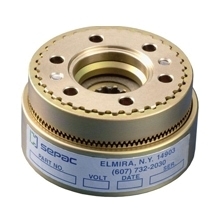SEPAC’s AEROSPACE COMPONENT MANUFACTURING
At SEPAC, we specialize in providing innovative, high quality, and long lasting custom engineering services for the aerospace industry. Each product is built with safeguards and tight adherence to customer specifications. Our aerospace components include electromagnetic clutches and brakes for the following equipment:
- Commercial aircraft
- Helicopters
- Rocket launching systems
- Satellites
- Optionally Piloted Vehicles (OPVs)
- Unmanned Aerial Vehicles (UAVs)
Our AS9100 and ISO 9001 certifications illustrate our commitment to quality and reliability. We know how critical it is that you, your team, and your customers can rely on aerospace systems to function without failure or interruption. Our expertise will ensure a design that is both cost effective and functional, while meeting complex performance requirements.
See below to learn more about how our products are used in common aerospace and outer space applications.
SEPAC’s Aerospace Capabilities
Aerospace technology is constantly evolving to improve efficiency and performance. For several decades, SEPAC has been the industry leader for providing custom motion control solutions for the aerospace industry. We have the necessary tools, skills, and knowledge to keep up with advances in aerospace actuation systems to meet the demand for specialized motion control solutions.
Our team of engineering and design experts work with our customers from the beginning toanalyze your product requirements and determine the best material choices, finishes and protective coatings, and electrical configurations to make the project succeed within its budget. We ensure viable, long lasting designs by considering the following:
- DO-160
- Shock and vibration
- Usage scenarios
- Environmental factors
SEPAC’s design expertise allows us to create high-quality designs that balance complex performance requirements with cost to best fit your project’s needs. We design compact, lightweight, precise, energy-efficient, and low-maintenance clutches and brakes that provide controlled movement for many aerospace applications. Our high quality, custom-designed products are at the center of every actuation system to meet critical motion control needs.
Ebook
Learn more about our aerospace capabilities and how we can help your next project succeed by downloading our eBook today.
Download Now
Case study
challenge
SEPAC was contracted by a premier aerospace supplier to design and manufacture multiple models of brakes for the next generation of the International Space Station and other space travel applications.
Contact Us To Learn More >Solution
Over an extended period of time, SEPAC worked directly with the customer’s project team to develop a fail-safe brake that met the extremely tight performance and design tolerances associated with this highly specialized application. Additionally, SEPAC implemented design safeguards that were suited to withstand the unforgiving, zero gravity environment.
Contact Us To Learn More >production
After the custom design was approved, SEPAC manufactured the brakes. To ensure that all design requirements were met, the process required extensive planning, significant vendor interaction, and innovative manufacturing techniques spearheaded by SEPAC.
Contact Us To Learn More >result
The team at SEPAC successfully designed multiple solutions for the aerospace client, solutions that have the potential to be used in space travel for decades to come.
Contact Us To Learn More >Recommended products
The following SEPAC products are commonly found in a variety of Aerospace applications. Please click learn more to view our available standard catalog across these products including performance and mechanical specifications.





